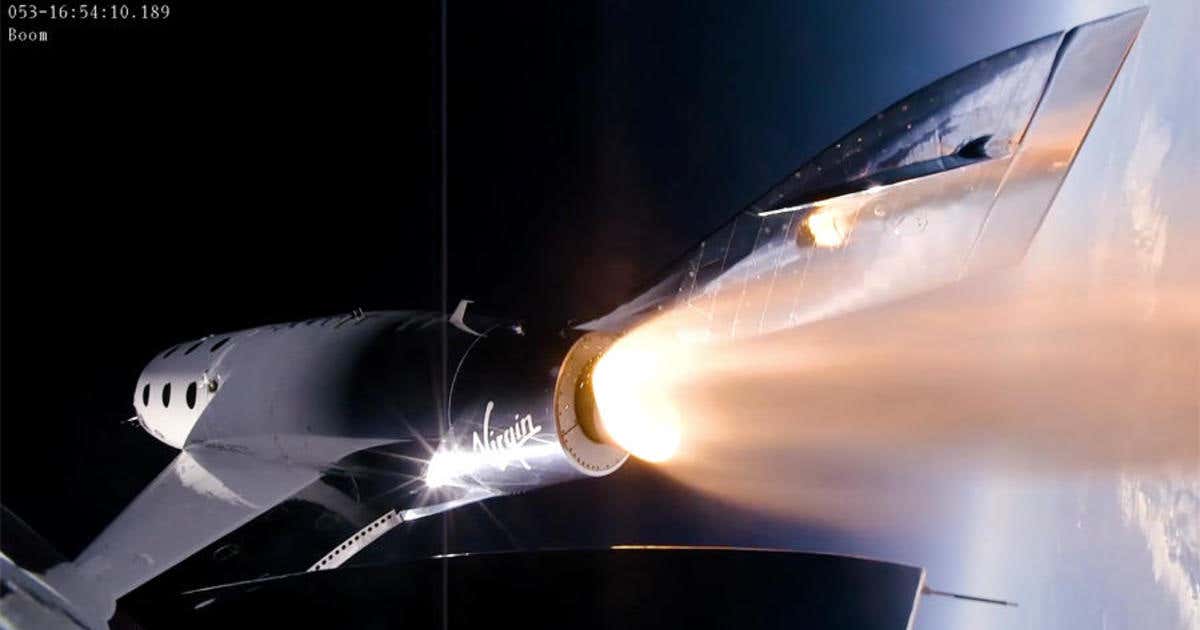Welcome to the age of commercial space tourism and the new space age
Sir Richard Branson and his team of astronauts successfully ventured into space before returning to Earth in their Unity 22 space pla

[July 11, 2021: Joseph Shavit]
Sir Richard Branson and his team of astronauts successfully ventured into space before returning to Earth in their Unity 22 space plane, a flight that both won the billionaire space race with Blue Origin (Jeff Bezos) and Space X (Elon Musk) and marked the first commercial spaceflight. Well sort of.
A Brief History of Space Tourism
In 1998, Richard Garriott founded Space Adventures, as a commercial enterprise working with the Russian Soyuz program to offer private citizens a once-in-a-lifetime experience to fly aboard a Russian Soyuz rocket to the International Space Station for an eight-day excursion. Including a comprehensive preflight training, customized equipment, food and accommodations the cost was set at $20 million per flight.
On April 30, 2001, as the first of seven Space Adventures clients, US millionaire Dennis Tito arrived at the International Space Station (ISS) becoming the world's first space tourist as well as the world's first paying customer of a space hotel aboard the ISS.
Since Tito's historic flight, six other private citizens had traveled to space, also coughing up millions to do so. The private citizens that made it into space so far were:
Dennis Tito: April 2001
Mark Shuttleworth: April 2002
Gregory Olsen: October 2005
Anousheh Ansari: September 2006
Charles Simonyi: April 2007
Richard Garriott: October 2008
Guy Laliberte: September 2009
Until today, there had not been any space tourists since 2009, which Space Adventures' representative Stacey Tearne put down to the fact the US Space Shuttle program was retired, leaving Russian Soyuz craft as the only option for getting to and from the ISS.
Shifting political landscapes, national economic priorities, the high cost per flight have also contributed to the reduced demand and opportunity over the last decade.
Enter Virgin Galactic and Richard Branson's flight aboard Unity 22 today.
The New Dawn of Space Tourism
Joining Branson aboard the Unity 22 were first time space tourists Colin Bennett, Virgin Galactic lead operations engineer and Sirisha Bandla, the vice president of government affairs and research operations at Virgin Galactic; increasing the current number of global space tourists from 7 to 10.
Some have argued that the duration (roughly 1 hour) and altitude (53.5 miles) of the Unity 22 flight pales by comparison to the Space Adventures, 254 mile and 8 day flights in the 2000's. However, it's undeniable that the seamless takeoff, launch via drop from VMS Eve, plane-like re-entry and landing on tarmac within a single, reusable, cost effective spaceship is definitely an exponential step forward to scaling commercial spaceflight. It's less about the distance traveled as much as it is about the refinement of the business model and the ability to scale the experience. Reusability and weight reduction are key drivers of cost efficiency and lowering ticket prices. Clearly demonstrated by the ten-fold decrease in ticket cost to go to space (down from $20 million to $250,000).
The same can be said for the modeling and thinking at Blue Origin and SpaceX which will both be launching their first space tourism flights in 2021.
The best way to visualize where we are with space tourism in 2021 is to look back at the evolution of smartphones in the 2000s. Early in that decade many brands (RIM, Handspring, Nokia, etc.) offered smartphones but it wasn't until Apple first released the iPhone in July 2007 and married emotional consumer marketing, seamless function and design to operational economics that smartphone sales really took off and became mainstream. We are now entering that phase in space tourism. There are three viable juggernauts (Virgin Galactic, Blue Origin and Space X) innovating, building excitement, reducing operational costs, dropping ticket prices and generating consumer demand.
So it's fair to ask where do we go from here.
Virgin Galactic:
After today, Virgin Galactic plans two further flights in 2021, then the start of regular commercial operations from early 2022.
The ultimate goal is to conduct 400 flights per year. Some 700 Virgin Galactic tickets have already been sold to people from 60 different countries - including Hollywood celebrities like Tom Hanks, Leonardo DiCaprio, Justin Bieber, and Lady Gaga.
Blue Origin:
On July 20th, Blue Origin, will notch a similar milestone with its New Shepard suborbital vehicle. Blue Origin expects to send its chief — Jeff Bezos, the billionaire Amazon founder who recently resigned as the e-shopping giant's CEO at age 57 — into space along with a small crew including Bezos, his brother Mark and Mercury 13 aviator Wally Funk.
Bezos' flight will come on the 52nd anniversary of the first crewed moon landing, that of Apollo 11, in 1969. Blue Origin has not yet released its per-seat pricing, although a so-far anonymous auction winner paid $28 million to fly on the July 20th inaugural flight.
SpaceX
Elon Musk's SpaceX announced plans for its first all-civilian mission to space, a major milestone for private spaceflight and the nascent space tourism industry.
The mission aboard SpaceX’s Dragon spacecraft will feature a four-person crew led by Jared Isaacman, the founder and CEO of Shift4 Payments, a Pennsylvania-based payment processing company. The other crew members are: Hayley Arceneaux (Physician Assistant at St. Jude), Chris Sembroski (works in the aerospace industry) and Dr. Sian Proctor (geoscientist, explorer, and science communication specialist).
The flight is expected to launch sometime in the fourth quarter of 2021, according to SpaceX.
Isaacman said in a statement that the mission, dubbed Inspiration4, is “the realization of a lifelong dream and a step towards a future in which anyone can venture out and explore the stars.”
Following today's flight, Richard Branson summed up space tourism best. “We’re here to make space more accessible to all. We want to turn the next generation of dreamers into the astronauts of today and tomorrow. We’ve all us on this stage have had the most extraordinary experience, and we’d love it if a number of you can have it, too. If you ever had a dream, now is the time to make it come true. I’d like to end by saying welcome to the dawn of a new space age.”
For more technology stories check out our New Innovations section at The Brighter Side of News.
Like these kind of feel good stories? Get the Brighter Side of News' newsletter.
Tags: #New_Innovations, #Space_Flight, #First_Time, #Space_Race, #The_Brighter_Side_of_News
Joseph Shavit
Head Science News Writer | Communicating Innovation & Discovery
Based in Los Angeles, Joseph Shavit is an accomplished science journalist, head science news writer and co-founder at The Brighter Side of News, where he translates cutting-edge discoveries into compelling stories for a broad audience. With a strong background spanning science, business, product management, media leadership, and entrepreneurship, Joseph brings a unique perspective to science communication. His expertise allows him to uncover the intersection of technological advancements and market potential, shedding light on how groundbreaking research evolves into transformative products and industries.



